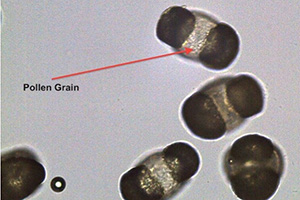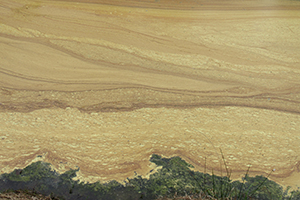Breathe in, Slowly Exhale. Now, Cough, Sneeze & Rub Your Eyes
Breathe in, Slowly Exhale. Now, Cough, Sneeze & Rub Your Eyes
By Bill Willis and Bill Steinmetz
March 08, 2018

(Photo courtesy of goodhealth15.blogspot.com)
The most acknowledged and visible seasonal allergens are the pollens from trees, grasses, and weeds. Some pollens are too large to be effective allergens and often get a bad rap for being present at the same time as notorious pollens like oak tree or ragweed. Plants that are pollinated by wind-dispersed pollen cause the greatest impact on humans.
Studies have shown that goldenrod and ragweed bloom at the same time, but it’s the ragweed that causes hay fever. Goldenrod is deemed guilty by association. So, pull the ragweed and enjoy the Goldenrod.
If interested in the severe allergens and pollen counts locally, the NC Division of Air Quality (DAQ) runs a pollen sampler on Reedy Creek Road in Raleigh and shares its finding daily. The nightly news carries a segment predicting the severity of pollen counts the next day. Usually between 5:00 am and 10:00 am, the levels of windblown allergens are the highest, so plan accordingly if you need to be outside.?

(Photo courtesy of newtonsapple.org.uk)
With the current unprecedented warm weather, the timing of the peak releases may be off several weeks, so stay tuned to forecasts if you’re very susceptible.
Pine Pollen: Is it really the bad player? Depends?
Some folks don’t fully understand pine pollen and fiercely dislike it; but other people can’t get enough and buy pine pollen as a dietary supplement (extracts, raw pollen powder, or tinctures).
Pine pollen has only limited allergenic effects. The oaks, maples, and other hardwoods are the unseen culprits by hiding within the yellow pine cloud.

(Photo courtesy of Bill Willis)
The pine pollen grains look like Mickey Mouse ears and have an air bladder that helps with wind dispersal. That air sac also keeps the pollen floating on water. Skim it off, be done and begone. More vigor to you.
During the last week of March 2017, the pollen was really blowing in the wind creating a colorful canvas on the lake.



